Model configuration by packing molecules and molecular dynamics simulation of liquid#
Packing molecules function#
Advance/NanoLabo has a function to pack molecules into the empty space in the unit cell. This function enables you to build models such as liquid-solid interface and liquid solution easily.
We will show three examples of models for nano simulation prepared with packing molecules function: water-methanol mixture, anatase TiO2-water interface and graphene-water interface. You can construct models with solvent automatically by selecting solvent molecules and setting up number of them against pre-established models like slab models.
Tips
You can build models including only gas or liquid such as water-methanol mixture by packing molecules into vacuum unit cell.
Solvent largely affects reaction mechanisms and physical properties, so models considering solvent effects realize elaborate simulations which are more close-to-reality.
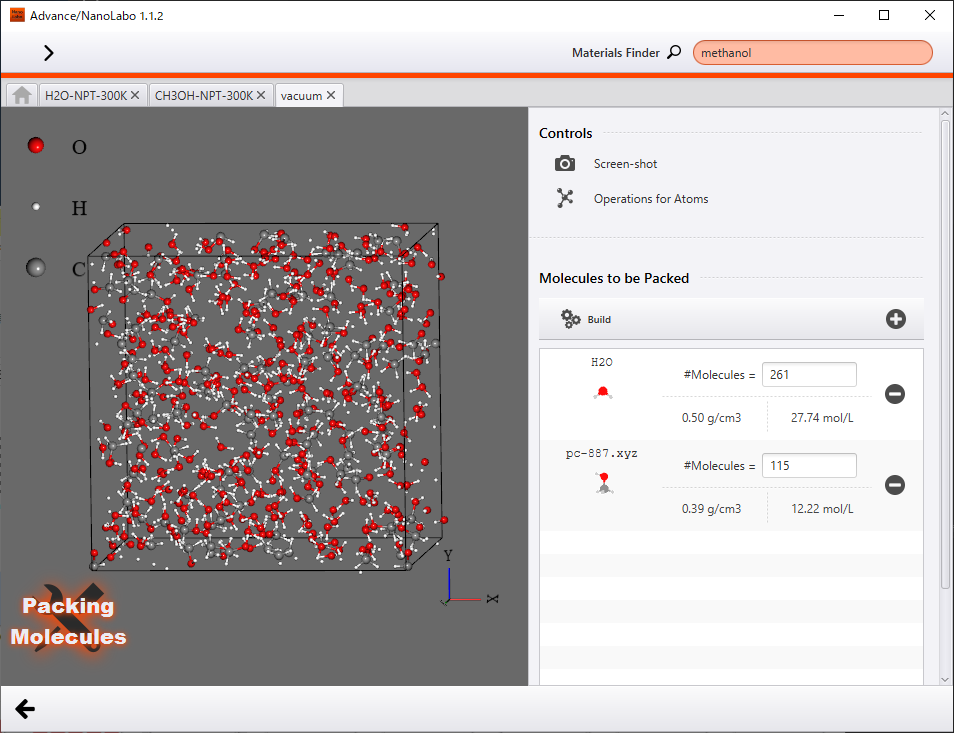
|
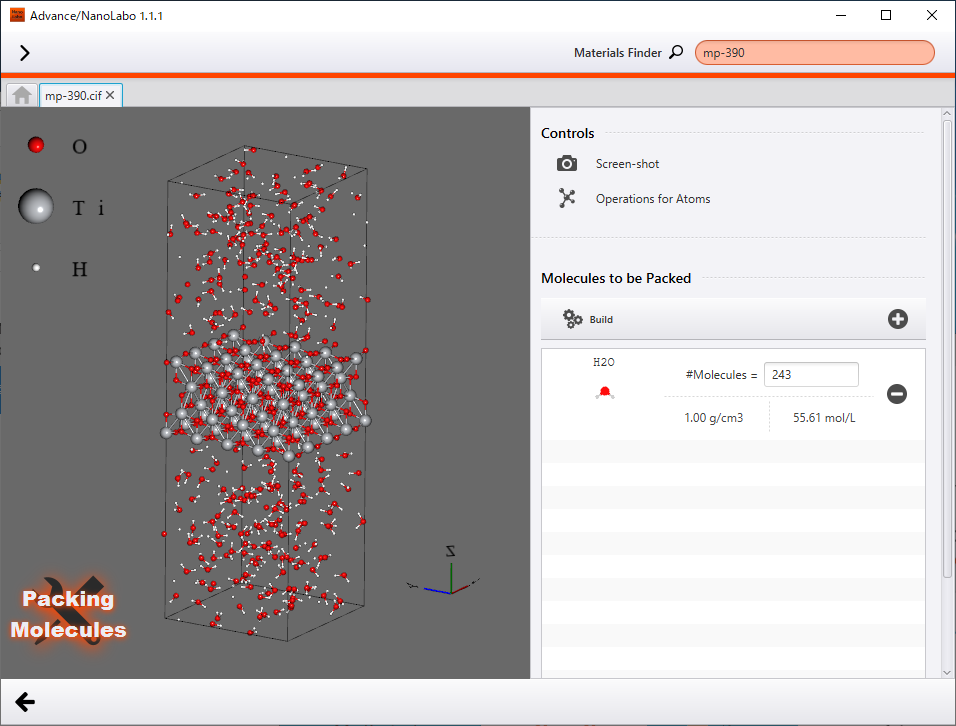
|
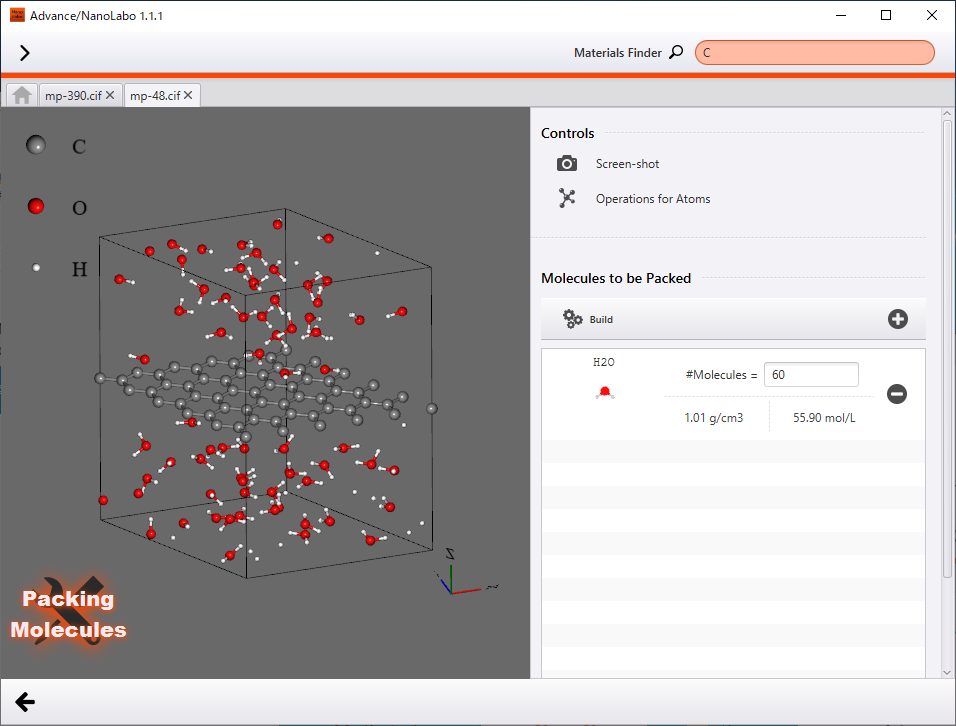
|
Water-methanol mixture |
Anatase TiO2-water interface |
Graphene-water interface |
Molecular dynamics simulation of liquid#
We generated three models with packing molecules function: water, methanol and water-methanol mixture (volume fraction 1:1). Next, we executed molecular dynamics simulation with NPT ensemble against each model under ordinary temperature and normal pressure (300 K and 1 bar). We adopted OPLS-AA1 as force-field, and simulation time was 100 ps.
We show models, temperature changes, density changes and animations of the three systems below.
Water#

|
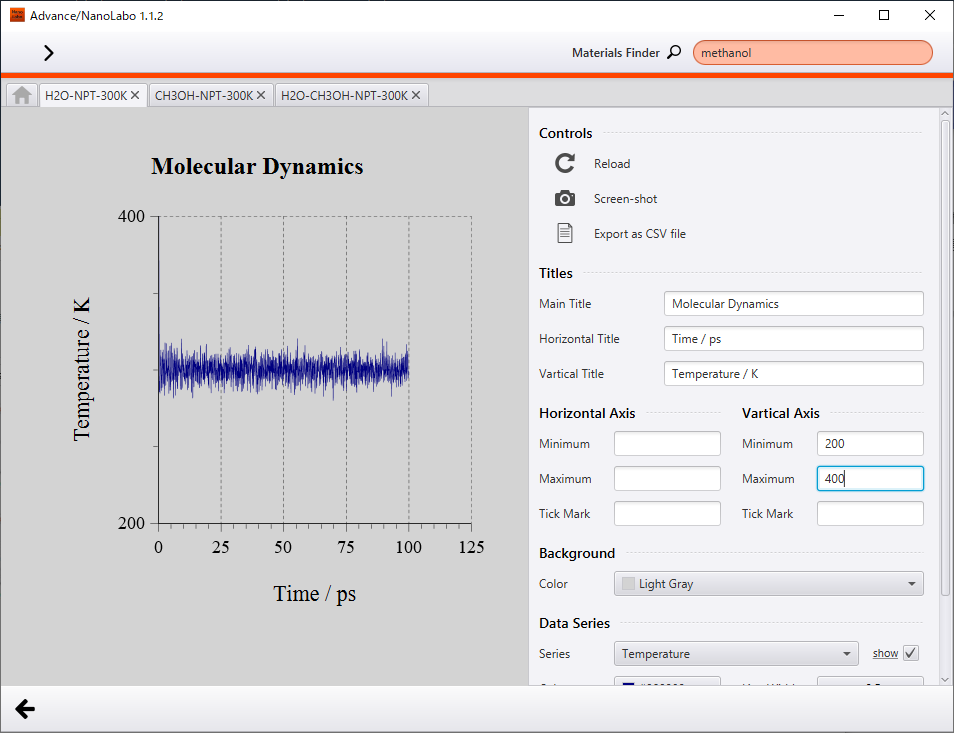
|
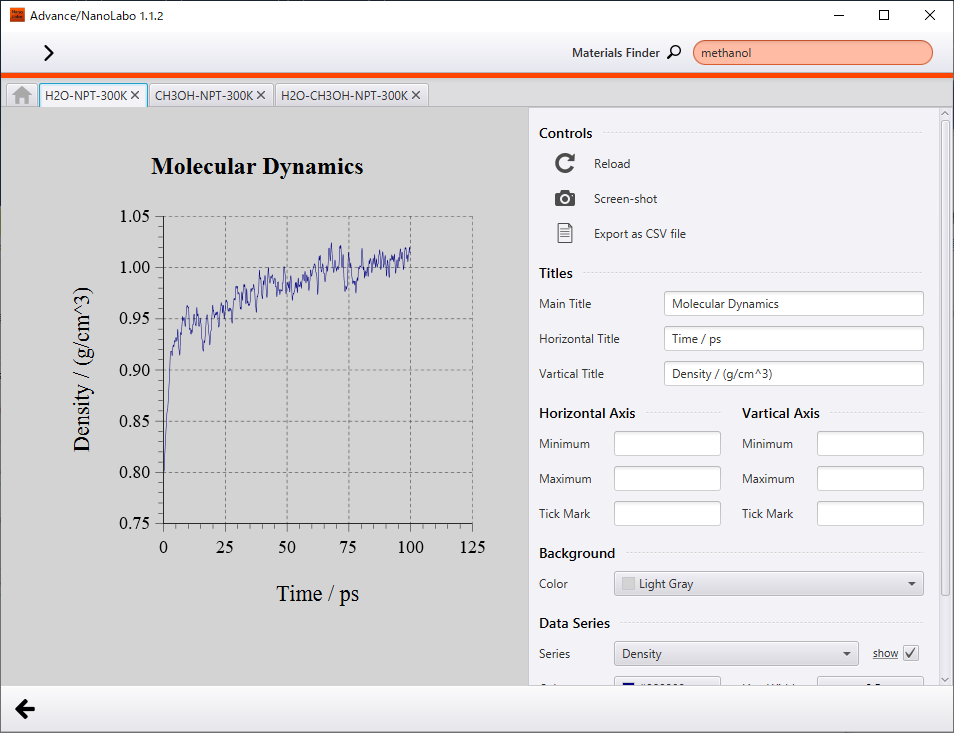
|
Model of water |
Change of temperature |
Change of density |
Methanol#
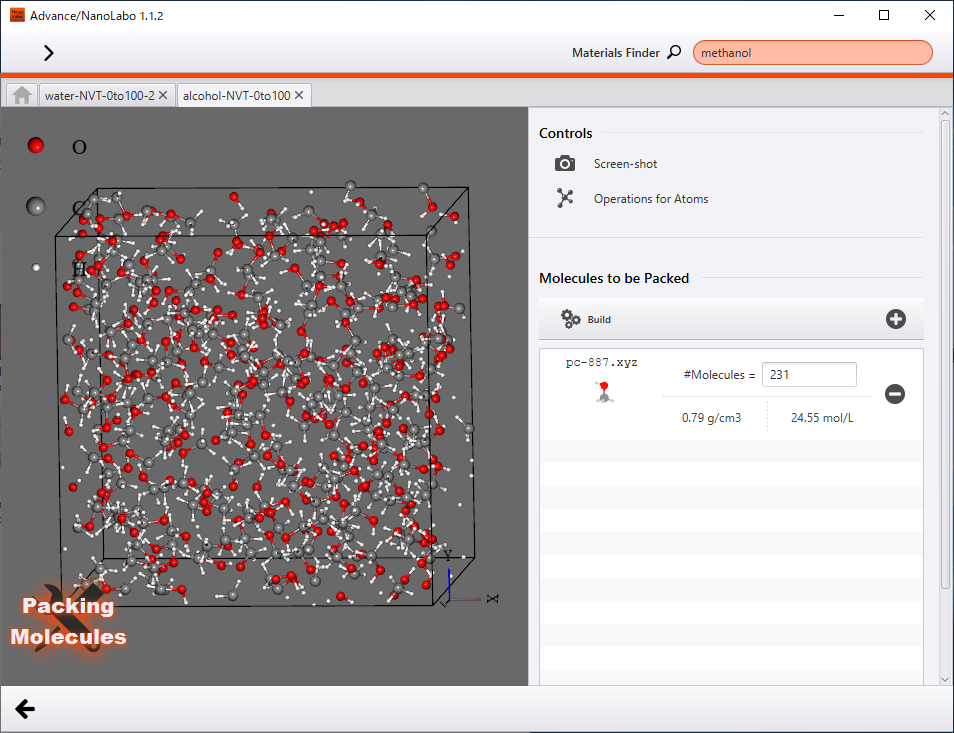
|
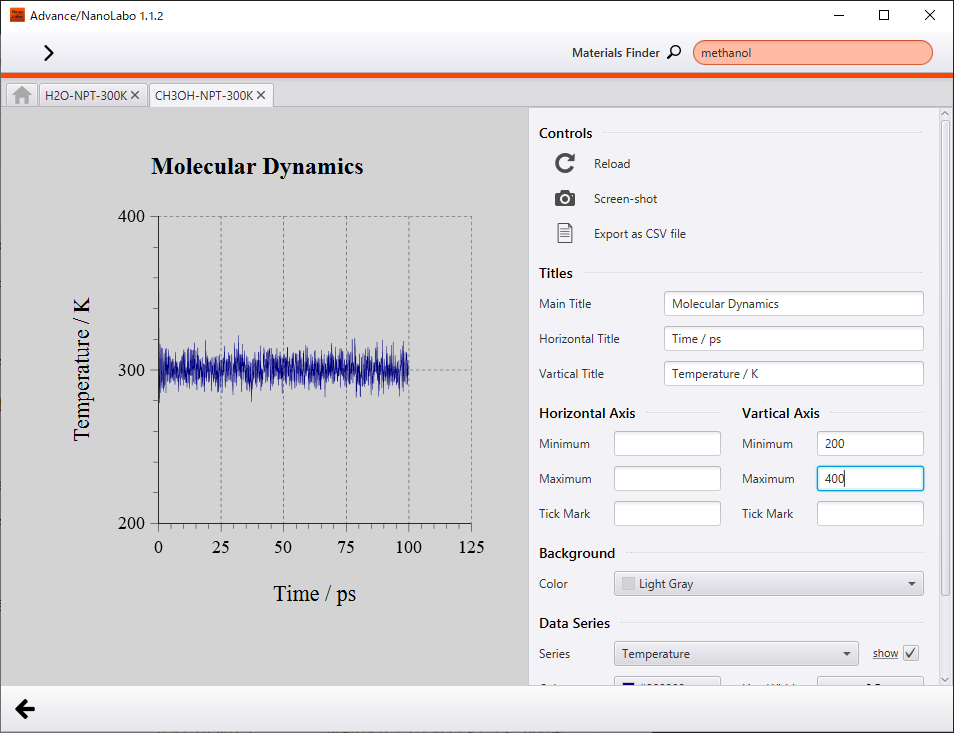
|
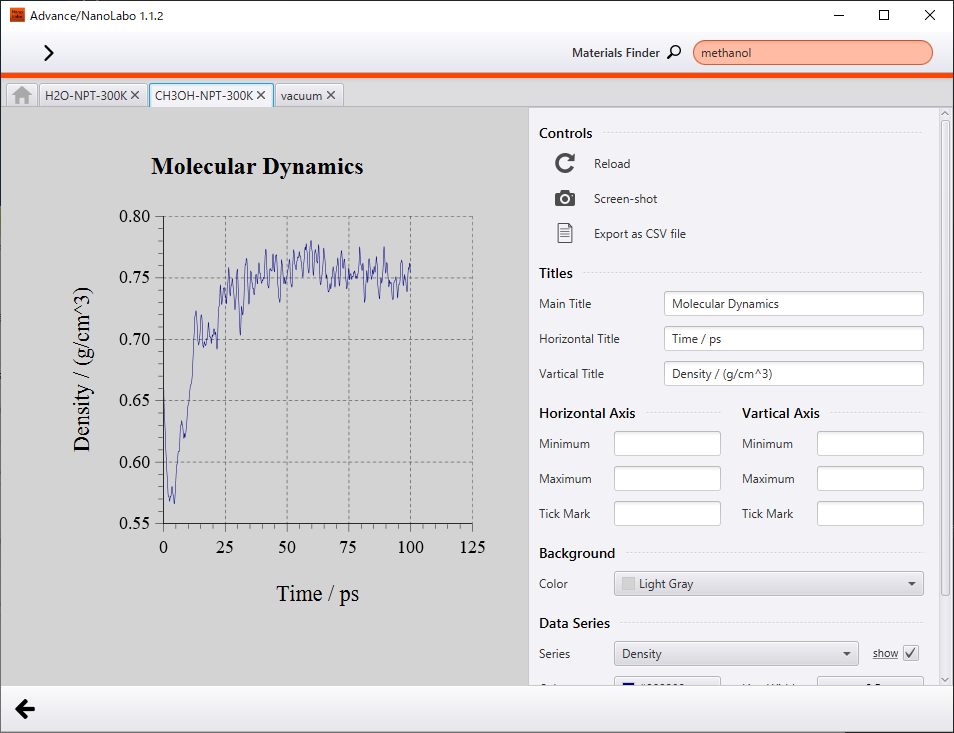
|
Model of methanol |
Change of temperature |
Change of density |
Water-methanol mixture#

|
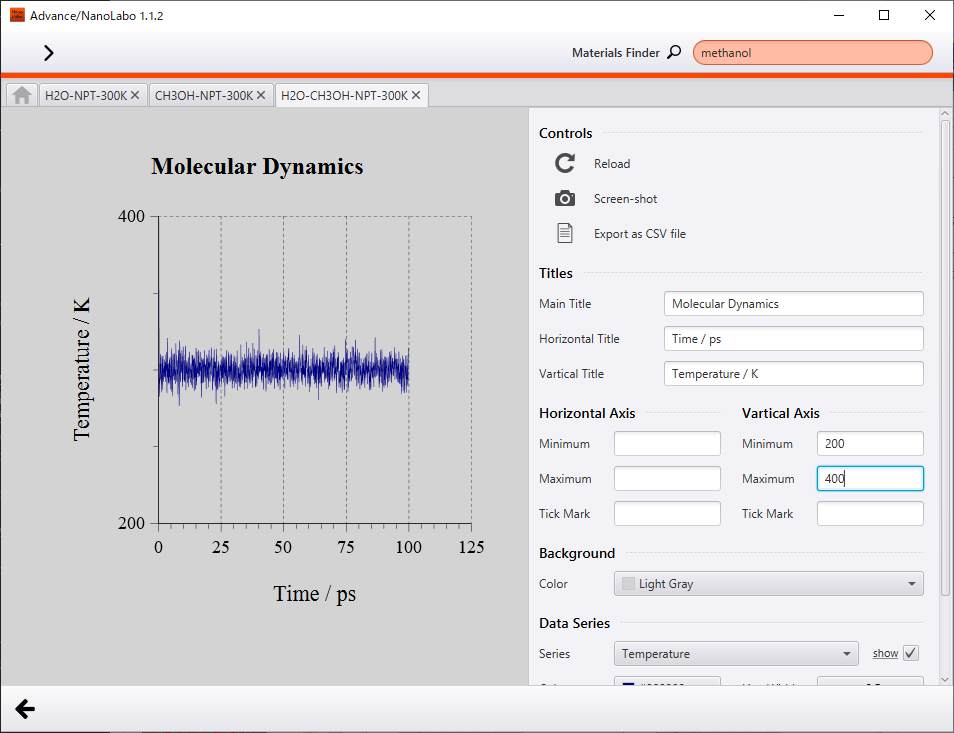
|
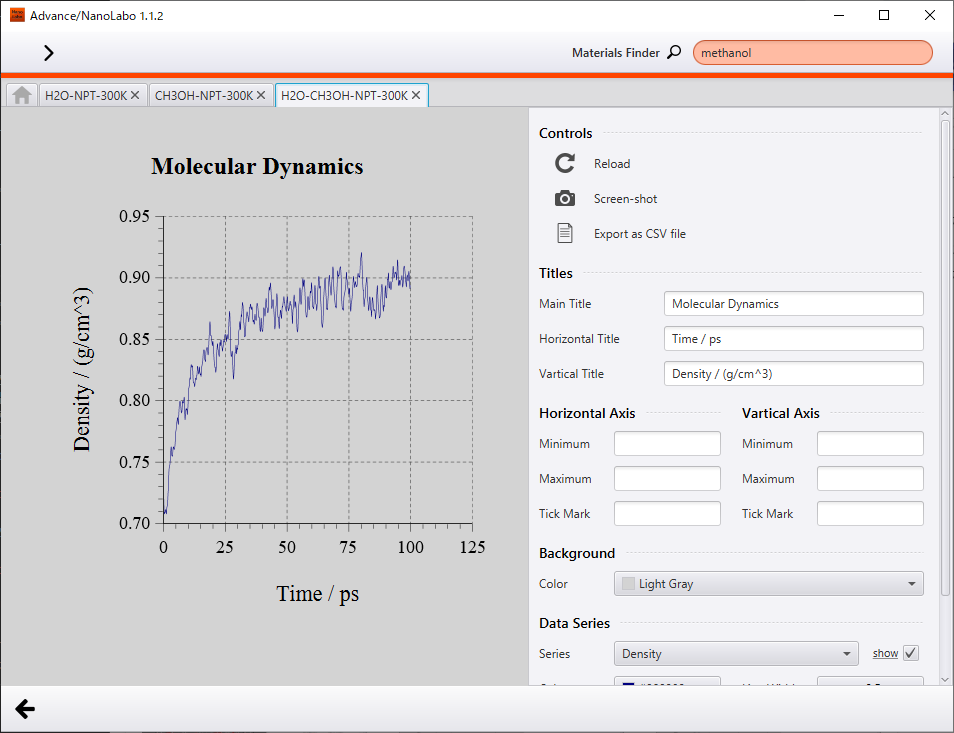
|
Model of water-methanol mixture |
Change of temperature |
Change of density |
Analysis results#
In all cases, temperature converged to 300 K, and we can see from the animations that water molecules and methanol molecules move dynamically in the unit cells.
We show each density of the systems in the table below. Densities of water and methanol are comparable to experimental values respectively. Calculated density of water-methanol mixture is 0.89 g/cm3 and takes intermediate value between water density and methanol density.
System |
Density(calculated)2 (g/cm3) |
Density(experimental) (g/cm3) |
|---|---|---|
Water |
1.00 |
0.9950 (25℃) 3 |
Methanol |
0.75 |
0.7866 (25℃) 3 |
Water-methanol mixture |
0.89 |
関連ページ#
- ナノ材料解析統合GUI Advance/NanoLabo
- 解析分野:ナノ・バイオ
- 産業分野:材料・化学
- Advance/NanoLabo Product Information
- Advance/NanoLabo Documentation
-
OPLS-AA(All-Atom Optimized Potentials for Liquid Simulations) is a force-field used mainly for simulation of biomolecules. ↩
-
Time average between 50 and 100 ps. ↩
-
S. Kim, et al: "PubChem 2019 update: improved access to chemical data. Nucleic Acids Res." 2019 Jan 8; 47(D1):D1102-1109. ↩↩
-
The Chemical Society of Japan, ed.: "Handbook of Chemistry: Pure Chemistry II, 5th ed.", Maruzen Publishing (2004) Published in Japanese. ↩
-
This is density of water-methanol mixture in which the percent concentration of mass of methanol is 44 % (the same value as that of the simulation model). ↩